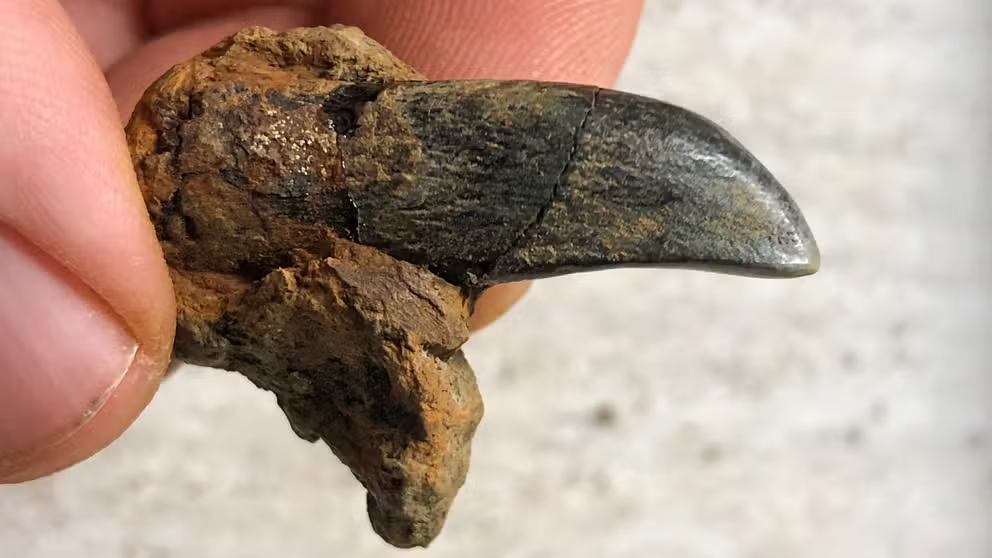Where dinosaur bones are revealed by the weather
At Maryland’s Dinosaur Park, rain washes away soft clay, effortlessly uncovering the fossils of prehistoric creatures
How kids at Dinosaur Park are finding bones with help from the rain
Located in Laurel, Maryland, Dinosaur Park is an outdoor laboratory where paleontologists, park visitors, and the weather combine forces to discover hundreds of fossils.
Dinosaur fossils are usually unearthed by paleontologists digging in the dirt.
But at a site northeast of the nation’s capital, much of the excavation is done by the weather.
In doing so, it reveals a story about the alien creatures and landscape of the mid-Atlantic region.
Cretaceous world
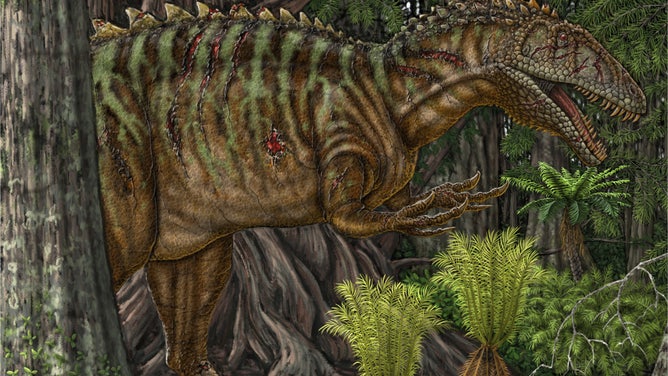
Acrocanthosaurus weaves its way through prehistoric Maryland.
(M-NCPPC Dinosaur Park)
"If you are in the field and you actually see something that you recognize as being a fossil — just to see it for the first time, it's like a jolt in the core of yourself," said JP Hodnett, paleontologist and program coordinator for the Maryland National Capital Parks and Planning Commission's (MNCPPC) Dinosaur Park.
Located in Laurel, Maryland, Dinosaur Park is an outdoor laboratory where paleontologists and park visitors work together to discover hundreds of fossils.

A tooth of a dinosaur named Astrodon johnstoni, which was discovered at Dinosaur Park.
(M-NCPPC Dinosaur Park)
According to Hodnett, Dinosaur Park is one of the few places in the mid-Atlantic that represents part of the early Cretaceous Period, with fossils at the park dating back to about 115 to 112 million years.
Those fossils represent a variety of animals and plants, such as prehistoric sharks, crocodiles, turtles, clams and redwood trees.
Of course, as its name suggests, many fossils at Dinosaur Park also belong to dinosaurs.
According to Hodnett, fossils at the park belonged to a larger relative of the velociraptor called Deinonychus, a Tyrannosaurus rex-sized mega predator called Acrocanthosaurus and a large, spiky herbivore called Priconodon.
One of the most significant discoveries was the largest dinosaur ever discovered in the eastern U.S.: Astrodon johnstoni.
"It is a 70-foot-long, long-necked, herbivorous dinosaur, kind of like the dinosaur version of a giraffe," Hodnett said. Astrodon was the first dinosaur discovered in Maryland, according to MNCPPC, and is now the Maryland State Dinosaur.
The park is a fertile bed of fossils and discoveries, and much of that has to do with the alien landscape of Maryland millions of years ago.
Water, water (and clay) everywhere
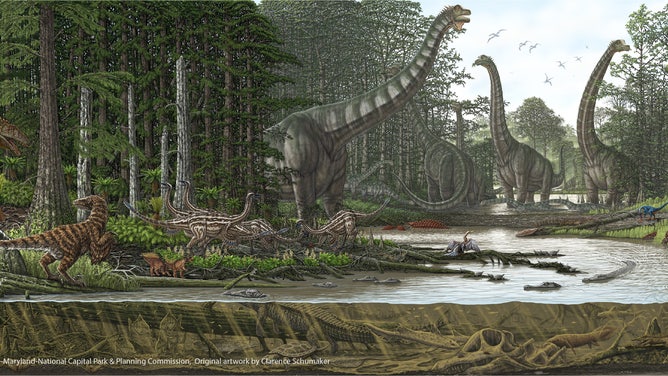
A depiction of Maryland from 115 million years ago. It is believed that the area was filled with wetlands. (Illustration by Clarence Schumaker)
(M-NCPPC Dinosaur Park)
"Water tells a big story here at the park," Hodnett said.
"Around that 115- to 112-million-year period, the mid-Atlantic region was basically a big drainage for all the water and sediments are coming off the ancient Appalachian Mountains."
According to Hodnett, as evidenced by the presence of marine shark fossils and freshwater clams, river streams were emptying out into the Atlantic Ocean by way of what is today Maryland.
"Everything is kind of mixed together, which also, helps support the idea that there's a river going through here. It's basically mixing all these animal parts together, like in a soup, so they're just kind of cobbled together," Hodnett said.
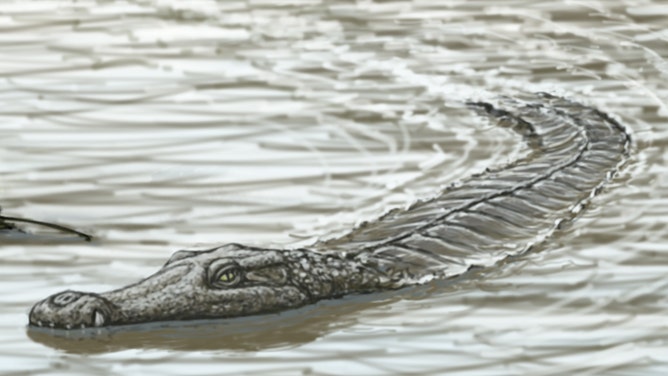
Custom mural created by Clarence Schumaker with John-Paul Hodnett and Ben Miller for M-NCPPC for use at the Dinosaur Park located in Laurel, Maryland. It illustrates an imaginary slice in time during the Early Cretaceous, representing the various flora and fauna found in the fossil record at the Park.
(M-NCPPC Dinosaur Park)
Because of these water flows, fine-grained sediment from further inland was brought to the end of the river and dumped into the ocean, according to Hodnett. In doing so, the sediment built up in the delta and created clay.
This clay then encased the remains of plants and animals, which turned into fossils after millions of years.
"This is what's great about Dinosaur Park — it is a time capsule of information," Hodnett said.
Due to the soft nature of clay, fossils buried within it are easily revealed by the element that helped create this "time capsule": water.
Rain archaeology
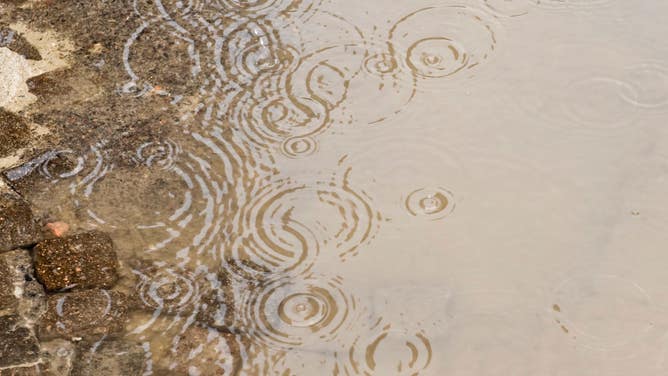
Raindrops create rings of ripples in a puddle.
(Giovanni Mereghetti / Education Images / Universal Images Group / Getty Images)
"We love it when it rains at Dinosaur Park," Hodnett said.
"Every time it rains — and that clay is super soft when it gets wet — it washes away layer by layer of the clay, leaving behind the bigger fossils and little fragments of rocks and things like that," he added.
According to Hodnett, heavy rains of big tropical storms will dump a lot of water at the park and expose a lot of fossils.
"Those are great days to come out and pick up things off of the surface," he said.
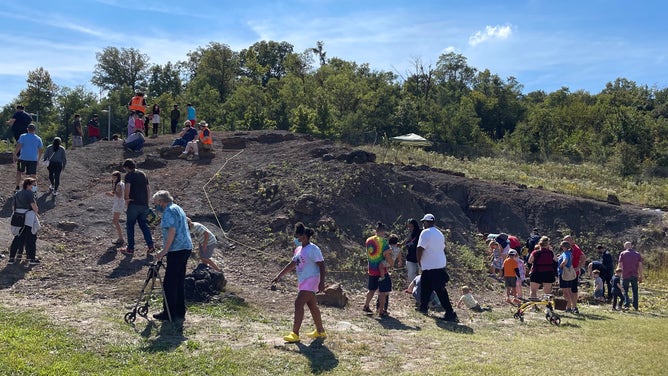
Once the rain subsides, park visitors can survey the ground for any fossils that might've been uncovered by the storm.
(M-NCPPC Dinosaur Park)
"That's the cool thing about the park is that we dig occasionally, but we only dig when we actually have like a fossil that's going into the ground — but the majority of what we do there, we just pick up the fossils after it rains."
"So it's a very, very easy job on my end," he laughed. "I don't have to lift heavy machinery like digging equipment to go out there and extract fossils. Now, I'm just picking things up as I go and putting them in bags."
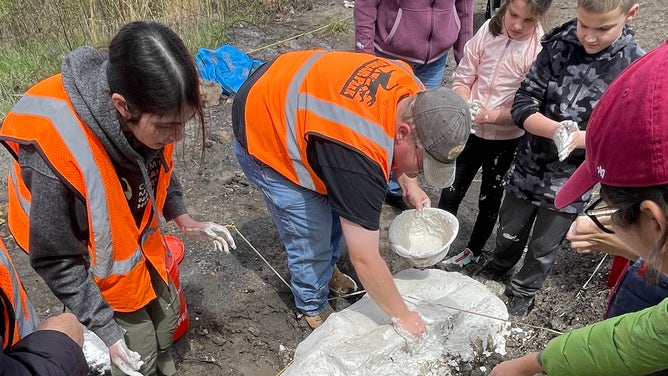
Paleontologist JP Hodnett and his team apply plaster to a large bone at Dinosaur Park in Maryland, as park visitors watch.
(M-NCPPC Dinosaur Park)
Because the rain easily washes away the soft clay and exposing with the multitude of fossils at the park, park visitors are encouraged to come by on the first and third Saturday of each month to participate in the science and make their own discoveries.
"Everybody is guaranteed to find fossils at Dinosaur Park," Hodnett said.
He added that children have some of the best luck in finding fossils, with some of the great dinosaur finds being made by three- and four-year-olds.

A child smiles as he holds an Astrodon tooth.
(M-NCPPC Dinosaur Park)
"You show a child a dinosaur tooth and their eyes just go wide," Hodnett said. "It's always a great thrill for me to see that enthusiasm because I had that same enthusiasm too when I was younger."
A portal to the past
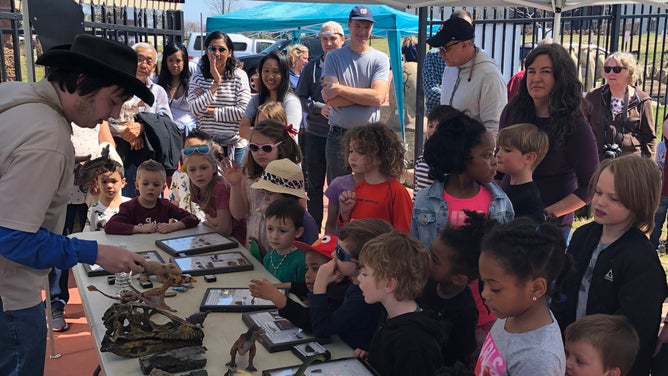
Children and adults gather around a table to learn from a park employee.
(M-NCPPC Dinosaur Park)
Fossils continue to be unearthed, due to Maryland’s geography and weather.
"You need weather to find fossils," Hodnett said. "If it was just completely dry all the time, you're not going to find anything — you need the rocks to go away. So, the natural weathering process is what gives us the fossils."
For Hodnett, finding fossils provides an insight into a world so different from the one we know today.
"It's always a good reminder when we find fossils that there were things here that have their own story, and finding the fossils tell you that story," he said.
